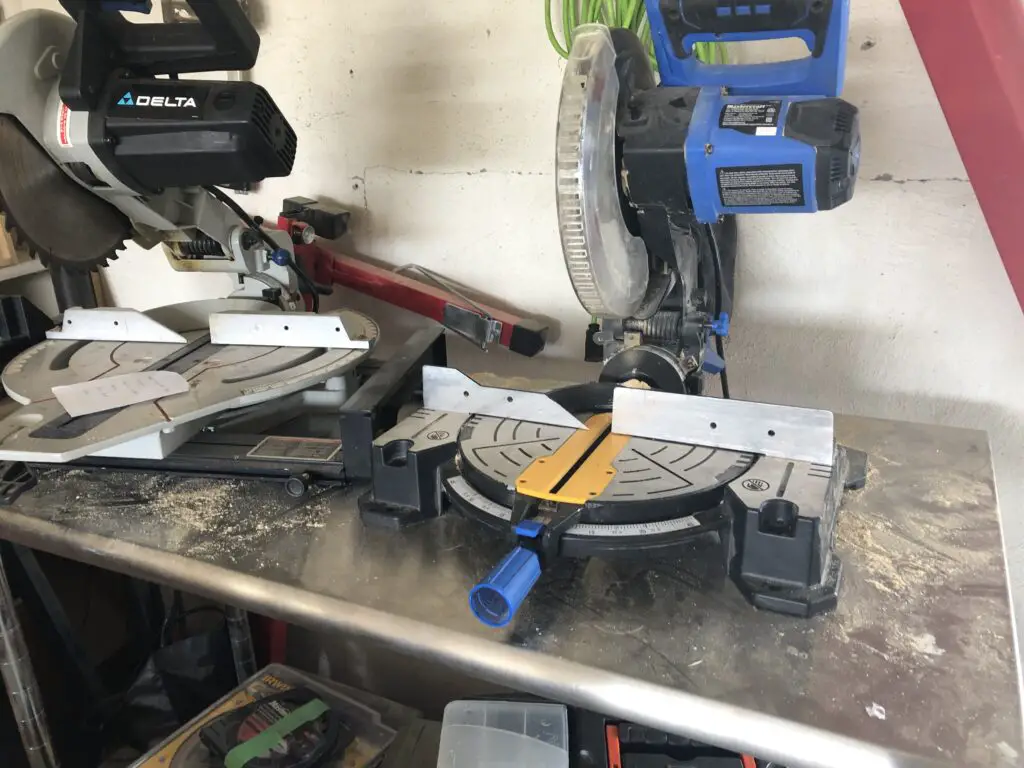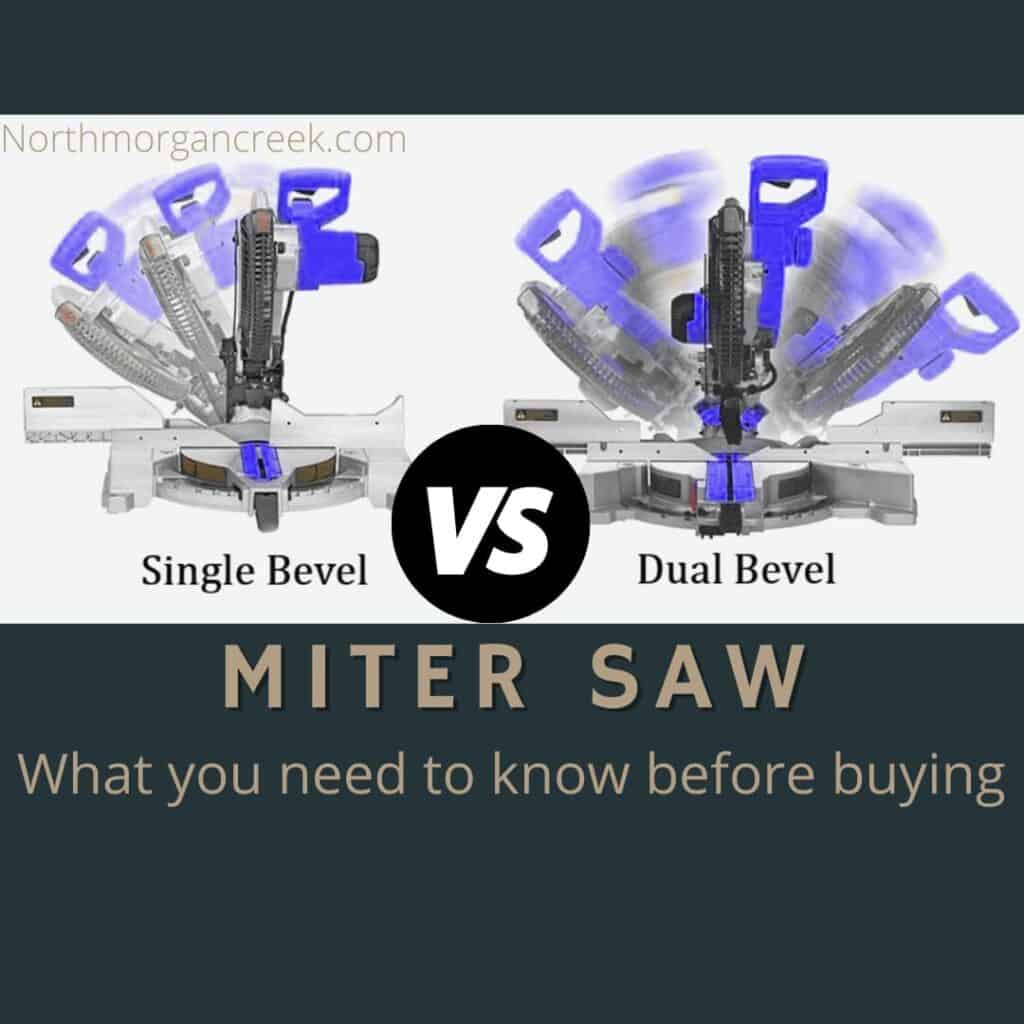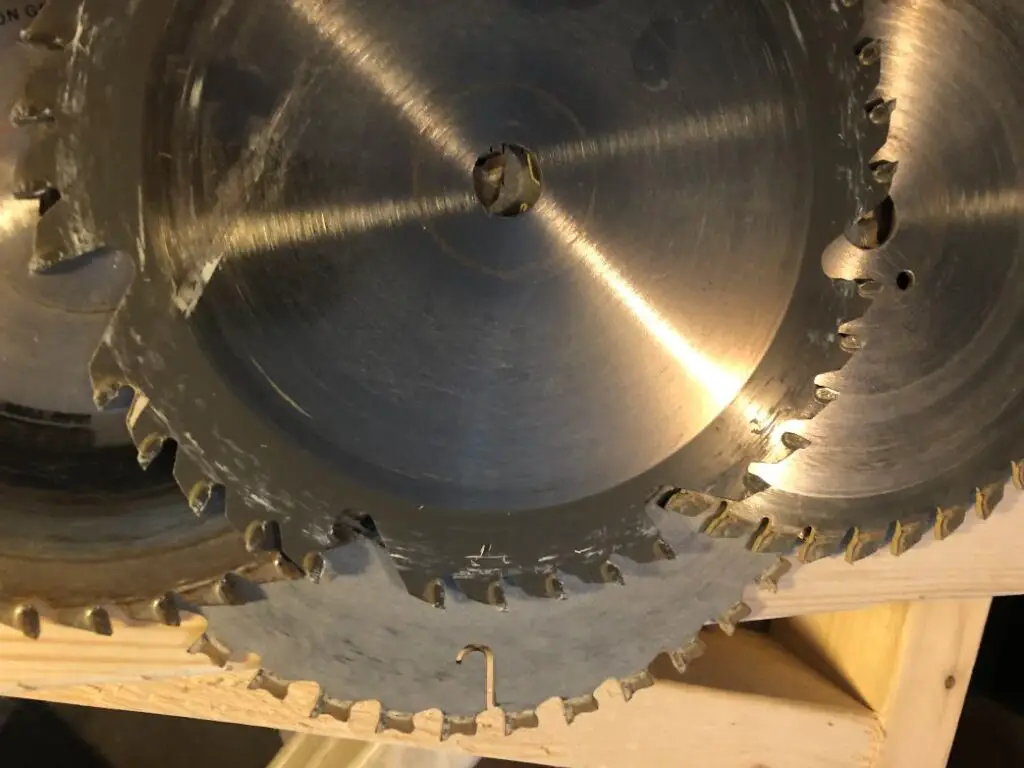What kind of miter saw should you buy? A high-quality miter say can be the staple item of your woodworking shop. It is a powerful hand tool that allows you to make cuts at just about any angle and in several different styles. But choosing a miter saw can be tough! There are so many different models created by tons of different brands, and they come in a range of price points.
How do you know which kind of miter saw to buy? The short answer to the question is…it depends on your woodworking needs.
There are a few main distinctions that should help you narrow it down which we will go through in this article. We will help you decide things such as the best size for you and if you need a corded or battery-powered model. We will also discuss the different types of miter saws.
What kind of miter saw should I buy?

The miter saw is a circular saw that can be used to make cuts at various angles, but not all miter saws are the same. There are a few different types of miter saws to be aware of: standard, sliding, compound, compound sliding, and dual compound sliding. Let’s look at each of these a little closer.
- Standard Miter Saw: This standard saw allows you to make a miter cut by rotating it to various angles.
- Sliding Miter Saw: This type of miter saw has rails that allow you to slide the blade across the wood. This range of motion means you can cut at greater depths than a similar-sized saw without the rails. This is a good choice for those that need to cut deeper lumber pieces, but it isn’t as compact as some other models.
- Compound Miter Saw: This type of miter saw allows the user to make a miter cut and a bevel cut. Compound miter saws are a good bet if you are attempting projects such as installing crown molding.
- Compound Sliding Miter Saw: As the name suggests, this saw is both a sliding miter saw and a compound miter saw. Due to the rails, you will get the increased capacity for crosscutting, and you will also get a left bevel cut.
- Dual Compound Sliding Miter Saw: With this saw, you will get the flexibility of beveling in both directions, left and right. Plus, you get the range of motion found in the sliding miter saw.
Do you need a dual bevel? You might! If you have a single bevel miter saw, you will need to physically turn your workpiece to make those bevel cuts on either side. If you feel like you won’t be able to get your angles exact on both sides after a flip, then a dual bevel may be the better choice.
Those that work as contractors (or are simply pressed on deadlines) will likely not want to keep flipping their workpieces. It takes up extra time, and it makes it more difficult to keep your cuts exact. A saw with dual bevel capabilities prevents the flip!
Corded vs Battery-Powered Miter Saws

Cordless technology in power tools has come a long way. Now, your battery-powered tools can run nearly as well as the corded options. So, which one is better for you? If you are a hobbyist woodworker that generally does all or most of your cutting in your shop, a corded miter saw will probably suffice as you don’t really need the portability.
However, if you are doing major DIY work to your home or you are moving from job site to job site, the battery-powered model may be a better fit. Not having to mess with extension cords can take a lot of the hassle out of the use of your saw. If you choose to go with a battery-powered saw, you will probably want to purchase two (or more) batteries so that you can always have a backup charging.
Choosing Between a 10-inch and 12-inch Miter Saw
You can find miter saws for sale in various blade sizes, as big as 20-inches or less than 10. For most people, however, it generally comes down to choosing between the 10-inch or the 12-inch. And this two-inch difference matters more than you may think.
There are three key differences between these two sizes. The first difference is speed. The 10-inch miter saw spins at a faster rate than the 12. This is because the blade is heavier in a 12-inch miter saw.
The next key difference is in the motor. A 10-inch miter saw typically has a 13 amp motor, but a 12-inch miter saw has a 15 amp motor. Your 12-inch saw will take more electricity or battery power to run.
Finally, the last key difference is the price. For many, the 10-inch saw will be the clear option because it will be on sale at a lower price point than the 12-inch. (A bigger blade means more teeth and thus more value!)

